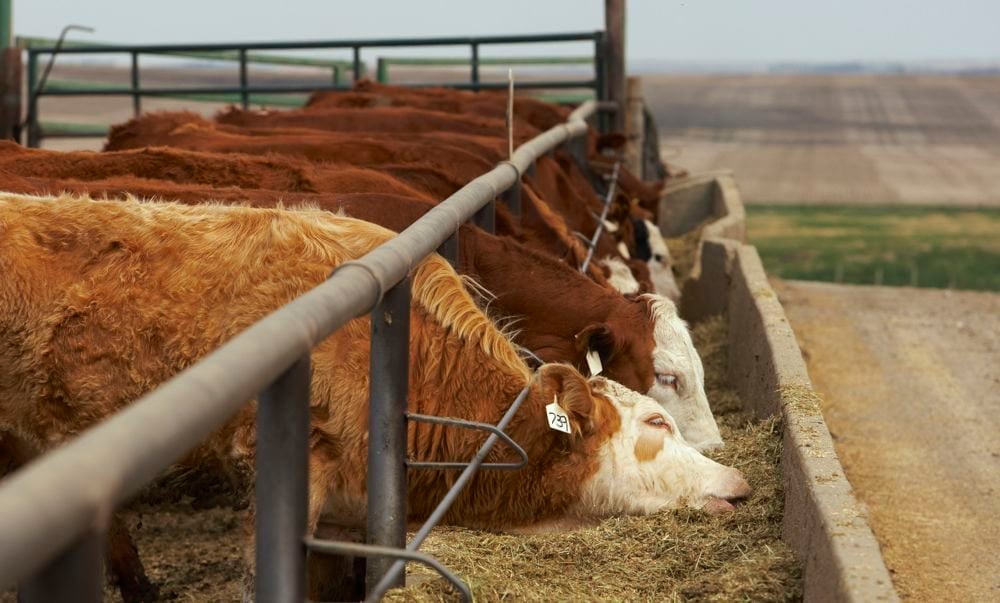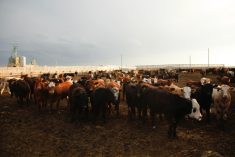Alberta packers were buying fed cattle on a dressed basis in the range of $265-$270 delivered this past week, up $3-$5 from seven days earlier. Live prices were quoted at $159-$162 delivered using a 60 per cent grading. If the feedlot operator booked their feed grains earlier in winter, live prices are $2-$3 above breakeven pen closeout values. There appears to be a sense of optimism in the feeder market which is something we haven’t experienced in a very long time.
Compared to last week, western Canadian feeder cattle markets traded $4 lower to $4 higher. Prices were softer in the eastern Prairie regions while Alberta values were solidly above week-ago levels. In central Alberta, higher-quality lower-flesh yearling steers weighing 800-825 lbs. were quoted from $188 to $192. Cash markets in Alberta have divorced from feeder cattle futures for the time being. Feedlot operators were anxious to secure supplies because feeder cattle availability will decline during June and July. Major finishing feedlots were the dominant buyers for both yearlings and calves. Pasture conditions are rather poor across the Prairies; demand for grassers is non-existent. The main factor driving the 500- to 600-lb. calves is the fact that April 2022 live cattle futures made a fresh contact high last week, at $134.32.
Read Also

U.S. grains: Wheat futures rise on supply snags in top-exporter Russia
U.S. wheat futures closed higher on Thursday on concerns over the limited availability of supplies for export in Russia, analysts said.
In Manitoba, Charolais steers with medium to heavier flesh weighing 890 lbs. were quoted at $166 and mixed steers weighing 800 lbs. were valued at $180. In central Alberta, tan steers weighing 820 lbs. reached up to $193 and Hereford-based heifers weighing 860 lbs. were reported at $169. In southern Alberta, Charolais-based steers weighing just over 800 lbs. were quoted at $194 and 730-lb. tan heifers were valued at $189.
The calf market was relatively flat across the Prairies. Angus-based steers weighing 530 lbs. were quoted at $228 in central Alberta; Simmental-blended steers weighing 560 lbs. were valued at $230 in east-central Saskatchewan. In Manitoba, red heifers weighing 670 lbs. were quoted at $171 and Charolais steers weighing 560 lbs. reached up to $240.
Canadian barley stocks as of March 31 were 2.806 million tonnes, down 700,000 from the March 31, 2020 supply of 3.528 million. We could see feed barley prices rally another $20-$30/tonne given the historically tight feed grain situation in Western Canada. Forage supplies are also rather snug. The feed and forage situation will continue to hinder upside potential in the feeder market. Western Canada is experiencing a very dry spring and timely rains are needed.
— Jerry Klassen manages the Canadian office of Swiss-based grain trader GAP SA Grains and Produits Ltd. and is president and founder of Resilient Capital, specializing in proprietary commodity futures trading and market analysis. Jerry consults with feedlots on risk management and writes a weekly cattle market commentary. He can be reached at 204-504-8339 or via his website at ResilCapital.com.














